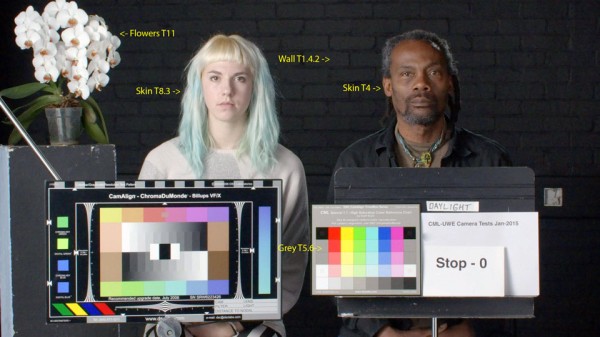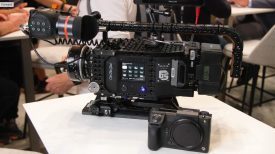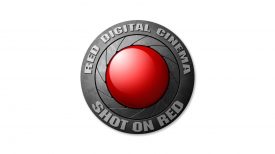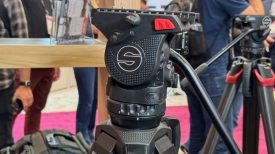By technical editor Matt Allard:
Respected cinematographer Geoff Boyle and CML(the Cinematography Mailing List) have set out to evaluate the image quality of popular cine cameras in their annual camera test evaluation. The controlled evaluations were carried out at the University of the West of England in Bristol, UK on the 24th & 25th January 2015.
The idea of the test was to push the cameras to their limits by going from four stops over exposed to four stops under exposed – both in daylight and tungsten lighting. It appears that this inherently gives single chip sensors greater problems than those with three imagers. You can see preliminary frame grabs from the tests here.
The full results and conclusions are yet to be posted but Geoff has given away some early clues about the results. The two traditional cameras that traditionally beat out everything else – the Sony F65 and Arri Alexa are now joined by the Red Dragon and the Panasonic Varicam at the top of the tree.
This from CML:
All Cameras were shot under both Tungsten and Daylight. This is not meant as a “shoot out” or a “camera comparison” it’s simply a fact finding mission, we exposed cameras either for 400 ISO or 800 iSO as requested by the manufacturers. Light levels in the daylight setting were adjusted to optimise exposure for 400 or 800 in daylight, in tungsten everything was lit for 800 and that’s why some frames indicate +1 stop as the iris was adjusted to compensate for the difference.
There is also a 5,000 ISO test as this is a major feature of the Varicam PL, we also included the Canon C500 in this test as I knew from previous experience that it was very good at 2,500 ISO. No other camera was included because they didn’t come close.
Exposure was set at T5.6. On the tungsten day we kept this level for all cameras, this meant that the 0-Stop reading on the 400 ISO cameras is actually -1-Stop
On the daylight day we changed levels, doubling the light level for the 400 ISO cameras so that exposures were constant.
The main light source was a Cineo Trucolor XS (remote phosphor LED) through a 8 * 4 trace frame to the left, and 8 * 4 bounce board to the right and either 1 or 2 12″ Trucolor MatchStix as kickers depending on the level we were shooting at.
All PL mount cameras were shot using the same Cook 50mm 5i lens. The B4 mount camera had a 20mm DigiPrime and the C mount camera had an antique 25mm T1.3
Here is a link to the RAW page.
Geoff also mentions that the common idea that three sensors will give better colour reproduction than a single sensor camera has been proven to be true without a shadow of a doubt. The colour off a three sensor camera is better than any single sensor camera evaluated.
Geoff will be part of the 4K Workflows seminar at the Post Production World conference at NAB – April 15th from 9:30 AM – 4:45 PM. There he will share his latest camera comparisons. We will also be talking to Geoff about his findings on our Teradek live show at NAB.
The cameras tested were:
Arri Alexa
Arri Amira
Canon C500
BlackMagic URSA
BlackMagic Pocket Cinema
AJA Cion
Sony F65
RED Dragon (Low Light & Skin Tone)
IOindustries 4KSDI
Panasonic Varicam (PL)
Panasonic Varicam(High Speed Version)
Digital Bolex






